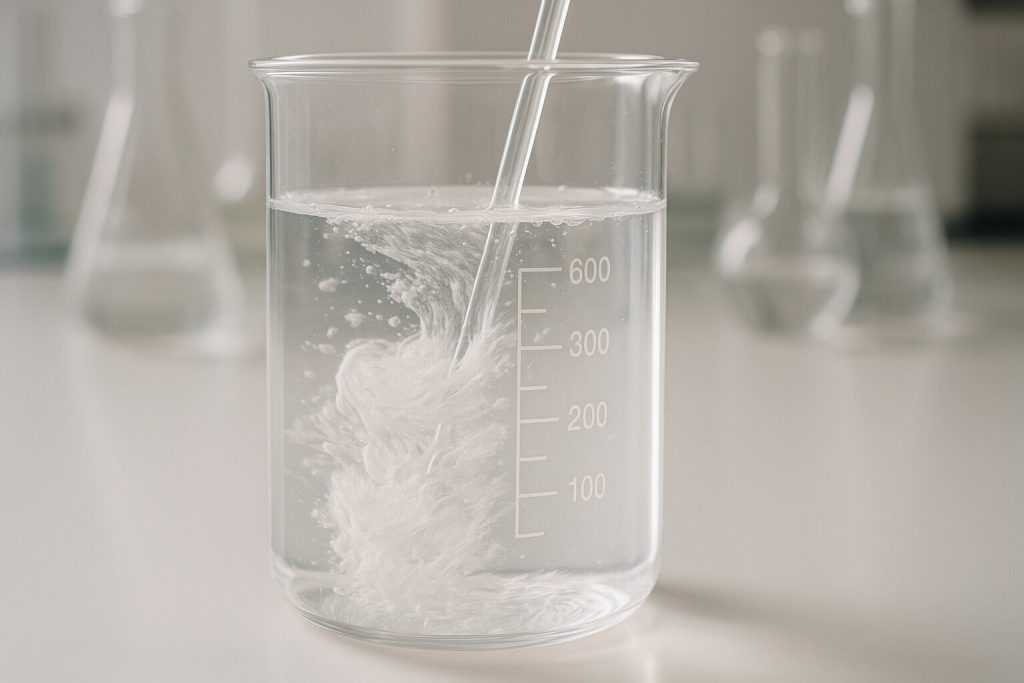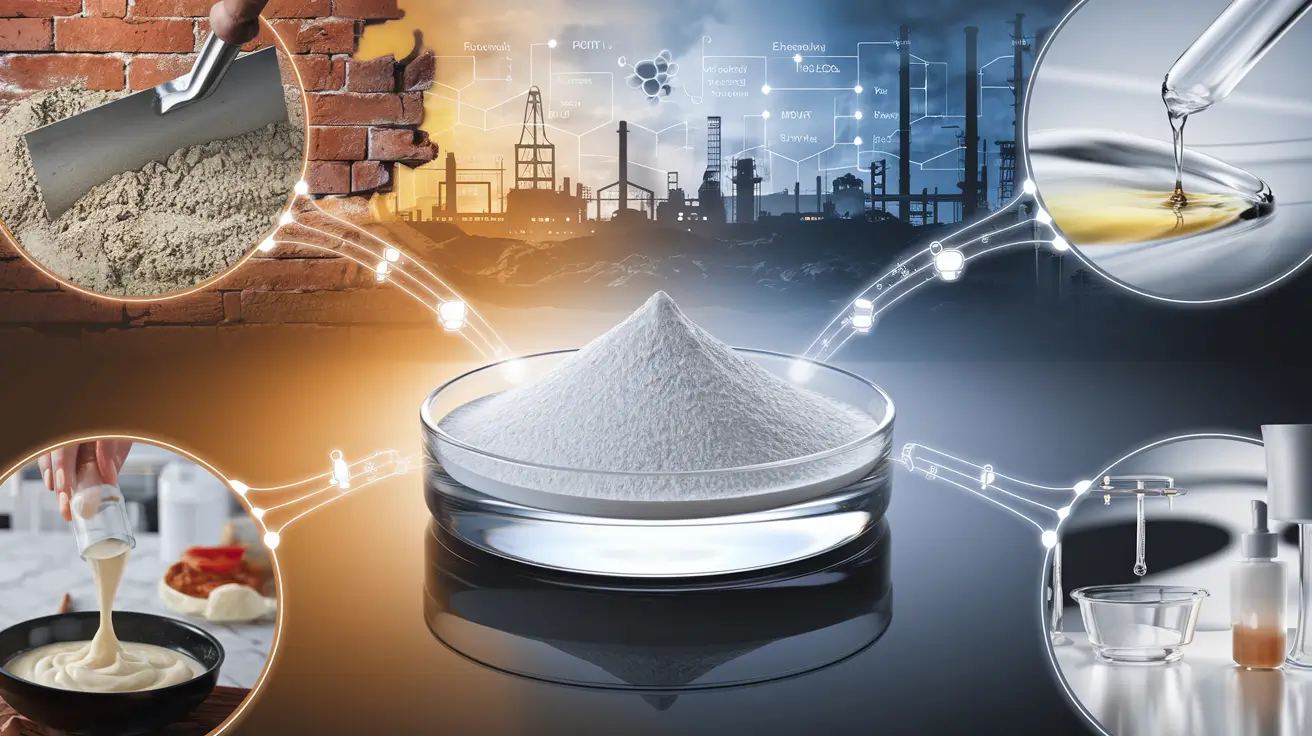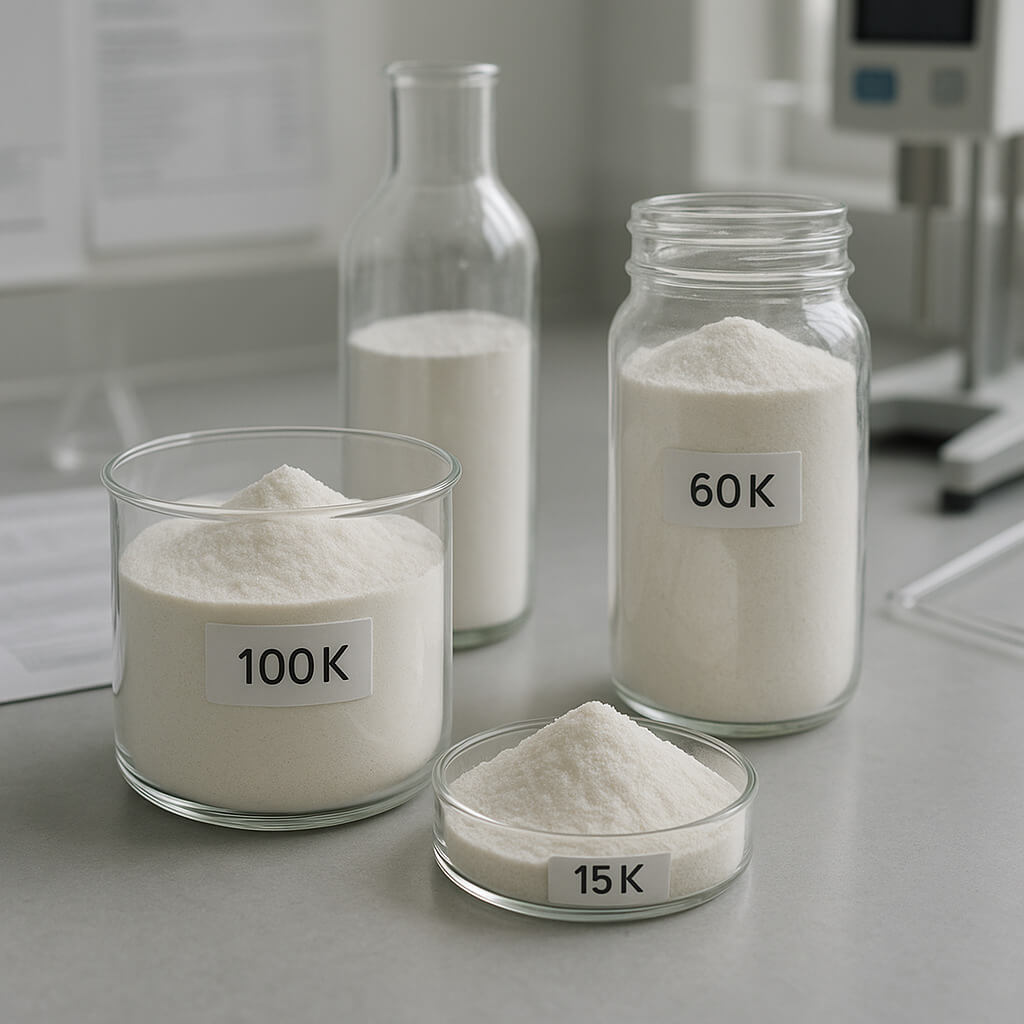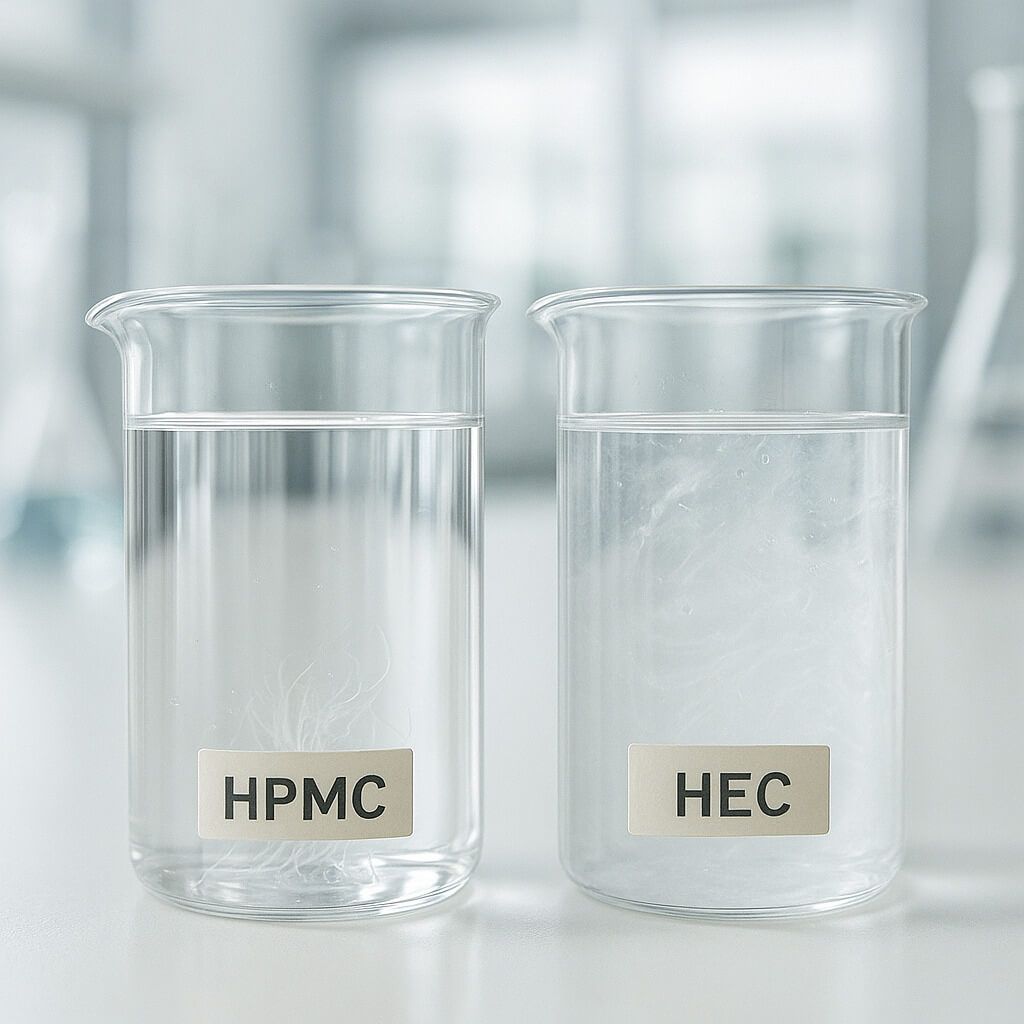Finding reliable suppliers of Hydroxypropyl Methyl Cellulose (HPMC) presents a significant challenge for purchasing managers and technical decision-makers across multiple industries. With numerous manufacturers claiming superior quality and competitive pricing, identifying truly leading producers requires careful evaluation of production capabilities, quality standards, and industry reputation. This article provides a comprehensive analysis of the world’s top HPMC manufacturers, comparing their strengths, specialties, and market positions. By examining these industry leaders, you’ll gain valuable insights to help select the optimal supplier for your specific application requirements.

1. What Is Hydroxypropyl Methyl Cellulose and Why Is It Important?
Hydroxypropyl Methyl Cellulose (HPMC) is a semi-synthetic, non-ionic cellulose ether derived from natural cellulose through chemical modification. This versatile polymer consists of cellulose backbones with methoxyl and hydroxypropyl substituent groups, which determine its key properties and applications. The material appears as a white to off-white powder that dissolves in cold water to form clear solutions with varying viscosities.
Deberias saber que HPMC has become indispensable across multiple industries due to its exceptional functionality as a binding agent, thickener, film-former, water-retention aid, and stabilizer. These properties make it a critical ingredient in countless manufacturing processes worldwide.
The global HPMC market size was valued at approximately $1.2 billion in 2022 and is projected to reach $1.8 billion by 2028, growing at a CAGR of around 6.5%. This growth is driven primarily by increasing demand in construction applications, pharmaceutical formulations, and food products. The construction sector accounts for the largest market share (approximately 45%), followed by pharmaceuticals (30%) and food applications (15%).
| Industria | Aplicaciones | Key HPMC Properties Utilized |
|---|---|---|
| Construcción | Tile adhesives, mortars, renders, gypsum products | Retención de agua, trabajabilidad, adherencia. |
| Productos farmacéuticos | Tablet coatings, controlled-release matrices, capsules | Film formation, controlled dissolution, binding |
| Alimento | Bakery products, sauces, dairy alternatives | Thickening, stabilization, texture modification |
| Cuidado personal | Cremas, lociones, champús | Viscosity control, film formation, stabilization |
The selection of reliable HPMC manufacturers is critical because product quality directly impacts manufacturing efficiency and end-product performance. Variations in substitution pattern, viscosity consistency, particle size distribution, and purity can significantly affect application results.
2. How Do the Top Global HPMC Manufacturers Compare?
The global HPMC manufacturing landscape features several dominant players alongside numerous smaller, specialized producers. Market leadership in this industry is determined by multiple factors including production capacity, quality consistency, technical innovation, and application expertise.
Here’s what matters most: Production capacity serves as a primary indicator of market position, with the largest manufacturers operating multiple production lines across several facilities. This capacity not only reflects market share but also indicates supply reliability—a critical consideration for large-scale industrial buyers.
| Fabricante | Estimated Annual Capacity (tons) | Primary Markets | Certificaciones de calidad | Inversión en I+D |
|---|---|---|---|---|
| Compañía Inc. | 45,000+ | Global | ISO 9001, GMP, REACH | Alto |
| Dow Chemical Company | 40,000+ | Global | ISO 9001, GMP, REACH, FDA | Muy alto |
| Shin-Etsu Chemical | 35,000+ | Asia, North America, Europe | ISO 9001, GMP, HACCP | Muy alto |
| SE Tylose | 30,000+ | Europe, North America | ISO 9001, GMP, REACH | Alto |
| Compañía Head de Shandong | 25,000+ | Asia, Global | ISO 9001, GMP | Medio |
| Anhui Shanhe | 20,000+ | Asia, Global | ISO 9001, GMP | Medio |
| Henan Tiansheng Chemical | 15,000+ | Asia, Middle East | ISO 9001 | Medium-Low |
Quality certification standards vary significantly among manufacturers, with the most reputable producers maintaining multiple international certifications. These include ISO 9001 for quality management systems, Good Manufacturing Practice (GMP) for pharmaceutical applications, and various regional certifications such as FDA approval for food-grade materials.
Geographic distribution plays an important role in the competitive landscape. Historically, Western manufacturers like Dow Chemical and Ashland dominated the high-end market, while Asian producers focused on high-volume, lower-cost segments. However, this distinction has blurred in recent years as Chinese and Indian manufacturers have invested heavily in quality improvements and technical capabilities.
3. Which Companies Lead the Asian HPMC Manufacturing Market?
Asia has emerged as both the largest production hub and consumption market for HPMC globally, with China dominating manufacturing capacity. The region’s production landscape features several established leaders alongside rapidly growing newcomers.
What you’ll find interesting: Chinese manufacturers have dramatically transformed from low-cost producers to increasingly sophisticated competitors, with some now challenging Western companies in high-end applications through aggressive investment in advanced production technology and quality control systems.
| Chinese Manufacturer | Production Capacity (tons/year) | Specialty Areas | Export Markets | Price Positioning |
|---|---|---|---|---|
| Compañía Head de Shandong | 25,000+ | Construcción, productos farmacéuticos | Global | Mid-range |
| Anhui Shanhe | 20,000+ | Construcción, alimentación | Asia, Middle East, Africa | Mid-low range |
| Henan Tiansheng Chemical | 15,000+ | Construcción | Asia, Middle East | Low-mid range |
| Lotte Fine Chemical | 12,000+ | Productos farmacéuticos, alimentos | Asia, Global | Mid-high range |
| Shandong Yiteng | 10,000+ | Construcción | Asia, Africa | Low-mid range |
Indian HPMC production has grown significantly, with manufacturers like Sigachi Industries, Rayonier Advanced Materials, and Huber Engineered Materials establishing strong positions in pharmaceutical and food-grade HPMC. These companies typically operate at smaller production scales than their Chinese counterparts but often focus on higher-value specialty grades.
Japanese and Korean manufacturers, particularly Shin-Etsu Chemical and Lotte Fine Chemical, maintain leadership positions in high-performance HPMC grades. Shin-Etsu, with its global presence and extensive R&D capabilities, produces some of the highest quality pharmaceutical-grade HPMC, commanding premium prices justified by exceptional batch-to-batch consistency.
Emerging players in Southeast Asia, particularly in Thailand and Malaysia, have begun establishing HPMC production facilities, often through joint ventures with Chinese or Western companies. These newer entrants typically focus on construction applications for regional markets but are gradually expanding their capabilities.
4. What Makes North American and European HPMC Producers Stand Out?
North American and European HPMC manufacturers have historically led the industry in terms of product quality, technical innovation, and application expertise. Despite increasing competition from Asian producers, these Western companies maintain significant advantages in several key areas.
The truth is: Western manufacturers typically command price premiums of 15-30% compared to Asian alternatives, but justify this differential through superior consistency, comprehensive technical support, and specialized grades tailored for demanding applications.
| Western Manufacturer | Headquarters | Key Differentiators | Primary Industries | Global Presence |
|---|---|---|---|---|
| Compañía Inc. | EE.UU | Pharmaceutical specialization, technical service | Pharmaceuticals, personal care, construction | Global production |
| Dow Chemical Company | EE.UU | R&D capabilities, product consistency | Construcción, productos farmacéuticos, alimentos | Global production |
| SE Tylose | Alemania | High-performance grades, technical expertise | Construcción, productos farmacéuticos | Europe-centered, global sales |
| Nouryon | Netherlands | Specialty applications, sustainability focus | Construction, food, pharmaceuticals | Europe, North America |
| JRS Pharma | Alemania | Pharmaceutical-exclusive focus, regulatory expertise | Productos farmacéuticos | Global production |
European production standards often exceed global requirements, with manufacturers adhering to stringent environmental and quality protocols. This results in products with exceptional purity profiles and consistent performance characteristics. European producers like SE Tylose (Germany) and Nouryon (Netherlands) have leveraged these high standards to maintain strong market positions despite higher production costs.
Technological innovations from Western manufacturers have consistently advanced HPMC performance capabilities. These include controlled particle size distributions for improved dissolution, modified substitution patterns for enhanced functionality, and specialized grades with unique performance attributes. Many of these innovations are protected by extensive patent portfolios, creating barriers to competition.
5. How Do HPMC Manufacturers Differentiate Their Product Offerings?
In an increasingly competitive market, HPMC manufacturers employ various strategies to differentiate their product offerings and create unique value propositions for customers. These differentiation approaches extend beyond basic pricing to encompass product characteristics, service elements, and technical capabilities.
Consider this carefully: The most successful HPMC manufacturers have moved beyond commodity competition by developing specialized grades that address specific application challenges, effectively creating protected market segments where technical performance trumps price considerations.
| Specialization Strategy | Example Manufacturers | Target Applications | Value Proposition |
|---|---|---|---|
| Viscosity Precision | Shin-Etsu, Ashland | Pharmaceutical controlled release | Predictable drug release profiles |
| Particle Size Control | Dow, SE Tylose | Dry-mix mortars, food powders | Rapid, lump-free dissolution |
| Substitution Pattern Optimization | Ashland, Shin-Etsu | Film coating, thermal gelling | Application-specific performance |
| Multi-functional Grades | Dow, Shandong Head | Construction composites | Reduced additive complexity |
| Certified Sustainable Grades | Nouryon, Ashland | Consumer products | Marketing advantage, compliance |
Industry-specific formulations have emerged as manufacturers develop deep expertise in particular sectors. For example, Ashland and JRS Pharma have created comprehensive portfolios of pharmaceutical-grade HPMC with precisely controlled properties for specific drug delivery applications. Similarly, construction-focused producers offer grades optimized for different building materials and application methods.
Technical support and service differences significantly impact customer relationships, particularly for complex applications. Leading manufacturers maintain application laboratories, provide formulation assistance, and offer troubleshooting support. This service infrastructure often proves decisive in winning and retaining customers in high-value segments.
6. What Should You Consider When Selecting an HPMC Supplier?
Selecting the optimal HPMC supplier requires a systematic evaluation process that considers multiple factors beyond basic pricing. A comprehensive assessment approach helps ensure that the chosen manufacturer can meet both immediate needs and long-term requirements.
This is absolutely critical: The lowest-priced HPMC option often proves more expensive in the long run due to hidden costs associated with inconsistent quality, technical problems, supply disruptions, or regulatory non-compliance.
| Parámetro de calidad | Método de evaluación | Impact of Inconsistency | Industry Sensitivity |
|---|---|---|---|
| Viscosity Tolerance | Statistical process control data | Processing problems, product variation | High for all applications |
| Patrón de sustitución | Manufacturer specifications, testing | Functional performance issues | Critical for pharmaceuticals |
| Distribución del tamaño de partículas | Sieve analysis reports | Dissolution problems, lumping | High for dry-mix products |
| Purity Profile | Heavy metals, residual solvents testing | Regulatory issues, product safety | Critical for pharma and food |
Supply chain reliability has gained increased importance following global disruptions. Evaluation factors include production capacity relative to your requirements, inventory policies, geographic distribution of manufacturing facilities, and historical performance during supply chain challenges. Many purchasers now implement dual-sourcing strategies for critical HPMC grades to mitigate supply risks.
Price-performance considerations require looking beyond unit pricing to assess total cost impact. This analysis should include processing efficiency, dosage requirements, technical support costs, and potential reformulation expenses. Higher-priced grades often deliver superior value through improved manufacturing efficiency or enhanced end-product performance.
7. How Are HPMC Manufacturing Trends Evolving?
The HPMC manufacturing landscape continues to evolve in response to changing market demands, technological advancements, and sustainability pressures. Understanding these trends provides insight into future supplier capabilities and potential competitive shifts.
What’s happening now: Manufacturing technology is advancing rapidly, with increased automation, improved process control, and enhanced quality monitoring systems transforming production capabilities across the industry.
| Sustainability Initiative | Leading Manufacturers | Implementation Status | Market Impact |
|---|---|---|---|
| Sustainable Wood Sourcing | Ashland, Dow, Nouryon | Widely implemented | Required for many Western markets |
| Energy Efficiency | Shin-Etsu, Dow, Shandong Head | Ongoing investment | Reduced carbon footprint |
| Water Recycling | Ashland, SE Tylose, Anhui Shanhe | Partially implemented | Impacto ambiental reducido |
| Solvent Recovery | Dow, Shin-Etsu, Lotte | Advanced implementation | Reduced emissions, cost savings |
Technological advancements in manufacturing processes are creating competitive advantages for innovative producers. These include continuous processing systems that improve consistency, advanced particle engineering techniques that enhance dissolution properties, and automated quality control systems that ensure tighter specification compliance. Manufacturers investing in these technologies can achieve both quality improvements and cost reductions.
Regulatory compliance developments continue to shape the competitive landscape, with pharmaceutical and food applications facing increasingly stringent requirements. Manufacturers with robust quality systems and regulatory expertise gain advantages in these high-value segments. The cost of regulatory compliance creates barriers to entry, particularly for smaller producers seeking to enter regulated markets.
Conclusión
The global landscape of Hydroxypropyl Methyl Cellulose manufacturing features a diverse mix of established leaders and emerging competitors across multiple regions. While Western manufacturers like Ashland, Dow Chemical, and Shin-Etsu maintain leadership positions in high-performance applications, Asian producers—particularly from China—have rapidly expanded capabilities and now dominate in terms of production volume.
Selecting the optimal HPMC supplier requires careful evaluation of quality consistency, supply reliability, technical capabilities, and application-specific expertise. The most successful purchasing strategies typically involve qualifying multiple suppliers across different tiers to balance performance requirements, cost objectives, and supply security.
For critical applications, partnering with manufacturers that offer comprehensive technical support and consistent quality often delivers superior value despite higher unit pricing. These partnerships can significantly reduce development time, improve manufacturing efficiency, and enhance end-product performance.
Sección de preguntas frecuentes
Q1: What certifications should I look for when selecting an HPMC manufacturer?
The most important certifications depend on your application. For pharmaceutical applications, look for GMP certification, ISO 9001, and relevant pharmacopeia compliance (USP, EP, JP). Food applications require food-grade certifications like FDA approval, GRAS status, and potentially kosher or halal certification. Construction applications should verify ISO 9001 and relevant regional certifications (CE marking in Europe, for example). All reputable manufacturers should provide detailed Certificate of Analysis (CoA) documentation for each batch, specifying tested parameters and results.
Q2: How do pricing structures vary among different HPMC manufacturers?
Pricing structures typically reflect several factors, including grade specifications, order volume, and manufacturer positioning. Western premium manufacturers (Ashland, Dow, Shin-Etsu) generally command 15-30% price premiums over standard Asian suppliers, justified by tighter specifications and comprehensive technical support. Volume-based pricing tiers are standard, with significant discounts (10-25%) available for bulk orders. Grade-specific pricing varies dramatically based on viscosity, substitution pattern, and particle engineering, with specialized pharmaceutical grades often costing 2-3 times more than standard construction grades.
Q3: Can HPMC manufacturers provide custom formulations for specific applications?
Yes, many leading HPMC manufacturers offer customization services, though capabilities vary significantly. Top-tier manufacturers like Ashland, Dow, and Shin-Etsu maintain dedicated application development laboratories and can create truly custom grades with specific substitution patterns, viscosity profiles, and particle characteristics. Mid-tier producers typically offer limited customization within their existing production parameters. Custom development usually requires minimum order commitments ranging from 500kg to several tons, depending on the manufacturer and degree of customization.
Q4: What are the typical lead times when ordering from international HPMC manufacturers?
Lead times vary significantly based on manufacturer, grade specificity, and global supply conditions. Standard grades from major manufacturers typically require 4-8 weeks from order to delivery for international shipments. Specialized or custom grades may extend to 8-12 weeks or longer. Asian manufacturers often have longer lead times for exports to Western markets (6-10 weeks) due to shipping logistics. Many larger manufacturers maintain regional warehouses in key markets, enabling faster delivery of common grades (sometimes within 1-2 weeks).
Q5: How do sustainability practices differ among leading HPMC manufacturers?
Sustainability practices vary widely across the HPMC manufacturing industry. Western manufacturers generally lead in comprehensive sustainability programs, with companies like Nouryon, Ashland, and Dow implementing certified sustainable wood sourcing, energy efficiency initiatives, and water recycling systems. Asian manufacturers show greater variability, with leading companies like Shin-Etsu and Lotte implementing advanced environmental systems, while smaller producers may have limited sustainability programs. The most significant differences appear in raw material sourcing (certified sustainable vs. standard sources), energy efficiency (modern vs. older production technology), and waste management practices.




